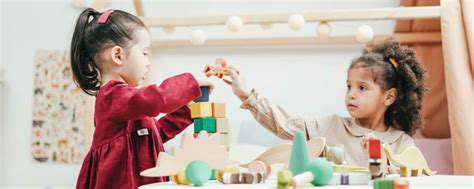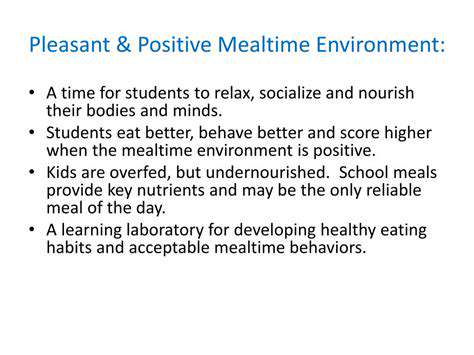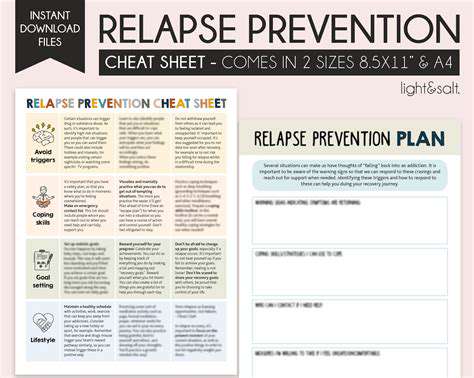Getting Your Puppy Used to Different Types of Toys and Objects

Types of Toys to Introduce
Early Exploration Toys
Introducing your puppy to a variety of textures and shapes from a young age is crucial for developing their sensory awareness and encouraging safe play habits. Soft, plush toys, especially those with different fabrics and patterns, can stimulate their sense of touch and sight. These early exploration toys should be easily grasped and manipulated, encouraging chewing and mouthing, which are natural puppy behaviors. Supervise your puppy closely during these interactions to ensure they don't swallow small parts or become overly fixated on one specific toy, which could potentially lead to obsessive behaviors.
Consider offering a variety of textures and sizes, introducing them gradually. This exposure to different materials will help your puppy learn to differentiate between safe and potentially unsafe objects in the future.
Interactive and Puzzle Toys
Interactive toys are fantastic for engaging your puppy's mind and preventing boredom. Puzzle toys that dispense treats or require your puppy to manipulate objects to access rewards stimulate problem-solving skills and provide mental enrichment, which is vital for preventing destructive chewing behaviors. These toys can be particularly beneficial for puppies who are prone to becoming bored or anxious.
Puzzle toys are a great way to channel your puppy's natural instincts in a positive way. They can also help keep your puppy entertained for longer periods, reducing the likelihood of unwanted behaviors like excessive barking or digging.
Durable Chewing Toys
As your puppy grows and develops, their chewing tendencies will intensify. Providing appropriate durable chewing toys is essential to redirect their chewing energy from furniture, shoes, or other household items. Durable rubber or nylon toys are excellent choices. These toys are designed to withstand aggressive chewing, preventing them from becoming easily damaged or broken, thus ensuring long-lasting engagement.
By providing durable chewing toys, you're not only protecting your home but also satisfying your puppy's natural need to chew. Choosing the right size and shape is important to ensure a comfortable and satisfying chewing experience.
Fetch and Throw Toys
Introducing fetch toys helps your puppy develop important skills like retrieving and responding to commands. These toys can vary from simple tennis balls to more complex interactive flying toys. The act of fetching encourages physical activity, strengthens the bond between you and your puppy, and provides valuable mental stimulation.
Incorporating fetch into your puppy's routine is an excellent way to provide exercise and mental stimulation. It helps channel their energy in a positive and fun way and fosters a strong bond between you and your furry friend.
Teething Toys
During teething, puppies experience discomfort and increased chewing. Teething toys are specifically designed to soothe sore gums. These toys often feature textured surfaces or cooling elements, offering relief from the pain associated with teething. Providing appropriate teething toys is a proactive measure to alleviate discomfort and redirect chewing behavior away from potentially harmful objects.
Teething toys are a must-have during puppyhood. Look for toys that are specifically designed for teething puppies, with features that help soothe sore gums. Choosing the right teething toy can make a significant difference in managing your puppy's discomfort and ensuring a happy, healthy teething period.
Supervising Play and Preventing Mishaps
Establishing a Safe Play Area
Creating a designated play area for your puppy is crucial for their safety and development. This area should be securely enclosed, free of hazards like toxic plants, electrical cords, and small objects that could be swallowed. A puppy-proofed space allows for supervised exploration and prevents accidental ingestion of harmful items, which is especially important during the critical early stages of development.
Consider using baby gates or playpens to delineate the area. This controlled environment allows you to supervise your puppy closely, ensuring they are engaged in appropriate play and preventing them from venturing into potentially dangerous locations.
Understanding Puppy Play Styles
Puppies learn through play, and understanding their specific play styles is essential for effective supervision. Some puppies are boisterous and energetic, while others are more delicate and playful. Observing your puppy's natural tendencies will help you anticipate potential mishaps and intervene appropriately. Recognizing signs of overexcitement, like excessive barking or lunging, is also key to preventing accidents and ensuring their safety.
Knowing how your puppy interacts with other animals and people is also important. This knowledge allows you to adjust your supervision strategies accordingly to prevent conflicts and ensure a positive play experience for everyone involved.
Safe Toys and Playtime Activities
Providing appropriate toys is vital for a puppy's development and well-being. Ensure that the toys are durable, non-toxic, and appropriate for their size and chewing habits. Avoid toys with small parts that could be broken off and ingested, as this can pose a significant choking hazard. Supervise playtime carefully, ensuring your puppy isn't engaging with items that could be unsafe, such as discarded food wrappers or other debris.
Preventing Play-Related Injuries
Accidents can happen during play, but proactive measures can significantly reduce the risk of injuries. Always supervise your puppy closely, especially during interactions with other animals or children. Be vigilant about signs of aggression or discomfort, and intervene immediately to prevent escalating conflicts. Knowing how to safely handle your puppy in case of a fall or injury is also essential to ensure their well-being.
Early intervention is key to preventing more severe problems. If you see any signs of discomfort or pain, take your puppy to the vet immediately.
Supervising Interactions with Other Pets
Introducing your puppy to other animals should be done gradually and under strict supervision. Start with brief, supervised encounters in a neutral space, allowing both animals to adjust to each other's presence without pressure. Observe their interactions closely for any signs of aggression or fear, and intervene promptly to prevent conflicts. Be cautious and understanding that some interactions may take time to develop and that patience is key.
Recognizing Signs of Puppy Stress and Overexertion
Puppies can easily become stressed or overexerted during play, especially when engaging in energetic activities. Pay close attention to your puppy's body language; signs of stress may include panting heavily, whining, or trembling. Overexertion can lead to injuries or exhaustion. Adjust playtime accordingly to avoid pushing your puppy beyond their limits. Recognizing these signs will help prevent potential health issues.
Taking breaks and providing opportunities for rest is crucial for a puppy's well-being. Allow them time to recover between play sessions, and ensure they have access to fresh water and a comfortable resting space.
Addressing Mishaps and Avoiding Repetition
Despite your best efforts, accidents can happen. If your puppy has an incident, it's crucial to remain calm and assess the situation. First, ensure the puppy is safe and that the problem is handled immediately. If there is injury, seek veterinary attention immediately. After the incident, analyze what happened to determine how to prevent it from recurring. Thorough observation and a willingness to adapt your approach will help ensure your puppy's safety and well-being.
Learning from past mistakes is essential for creating a safe and positive environment for your puppy. Adjusting your supervision techniques and understanding your puppy's unique needs will help them thrive.
Gradual Introduction and Consistency

Gradual Introduction
A gradual introduction of new concepts or information is crucial for effective learning and comprehension. Presenting complex ideas all at once can lead to overwhelming cognitive load, hindering understanding and potentially causing frustration. Instead, breaking down the material into smaller, manageable parts allows learners to process information incrementally, fostering a deeper understanding and retention of the subject matter. This approach builds a solid foundation, allowing for a more robust grasp of the overall concept.
By introducing new ideas step-by-step, learners can actively engage with the material, build upon existing knowledge, and develop a more comprehensive understanding. This approach is particularly valuable in educational settings, training programs, and any situation where the goal is to impart knowledge effectively.
Consistent Application
Consistency is paramount in achieving long-term results. Whether it's practicing a musical instrument, mastering a new software program, or developing a new skill, consistent application is key to proficiency. Regular practice, even in small increments, reinforces learned concepts and builds muscle memory, leading to improved performance over time. Without consistency, progress can stagnate, and the initial gains made may be lost.
This consistency also extends to maintaining a routine in your daily life. Consistency in your habits, whether it's eating healthy, exercising regularly, or prioritizing sleep, directly impacts your overall well-being and productivity. Consistency breeds confidence and reinforces the belief in your ability to achieve goals.
Targeted Reinforcement
Targeted reinforcement is a powerful technique for strengthening learning and improving performance. Instead of simply repeating information, this approach focuses on specific areas where learners are struggling or need further clarification. This personalized approach allows for a more effective allocation of resources, ensuring that time and effort are directed towards the most critical aspects of the learning process. This process leads to more efficient and thorough learning.
By identifying specific weaknesses and providing targeted support, learners can overcome challenges and develop a more complete understanding of the material. This approach is particularly effective in personalized learning environments, allowing educators and trainers to tailor their interventions to the unique needs of each individual.
Structured Progression
A structured progression is essential for navigating complex topics or processes effectively. This involves organizing information in a logical sequence, building upon previous concepts and gradually increasing the complexity of the material. This ensures a smooth transition and avoids overwhelming the learner with unfamiliar ideas before they have fully grasped the fundamentals. This method is crucial in any learning environment.
Adaptive Feedback
Adaptive feedback is a crucial component of effective learning. It involves providing timely and relevant feedback that addresses specific areas of improvement. This kind of feedback allows learners to identify their strengths and weaknesses, adjust their approach, and make necessary corrections. This is particularly important in dynamic learning environments. Providing timely and relevant feedback is an essential component of the learning process.
This form of feedback ensures that learners are constantly aware of their progress and areas requiring attention. This iterative process fosters a deeper understanding of the material and ultimately improves performance. It's an essential component of any learning or development program.
Continuous Evaluation
Continuous evaluation plays a vital role in monitoring progress and adapting strategies as needed. Regular assessment allows learners to gauge their understanding of the material and identify any knowledge gaps. This ongoing evaluation provides valuable insights into the effectiveness of the learning process and facilitates necessary adjustments to teaching methods or learning strategies. Regular assessment is essential for continuous improvement.
By tracking progress over time, educators and learners can identify areas where adjustments are needed. This iterative process ensures that the learning experience remains effective and relevant to the individual's needs. This approach is crucial for optimizing learning outcomes and achieving desired results.
Read more about Getting Your Puppy Used to Different Types of Toys and Objects
Hot Recommendations
- The Impact of Early Socialization on a Dog's Interaction with Other Animals
- Car Travel and Puppy Socialization: Making the Journey a Positive Experience
- The Importance of Early Environmental Exposure for Puppy Development
- Taking Your Puppy to the Vet: Positive Socialization Strategies
- Making Training a Positive Experience for Your Puppy
- Public Transportation and Puppy Socialization: A Step by Step Guide
- Safe Socialization: Allowing Others to Pet Your Puppy
- Helping a Puppy Who Struggles with "Stay"
- Positive Puppy Interactions: Making Meetings with New Friends Fun
- No Treats Needed? Training Basic Commands with Verbal Praise










